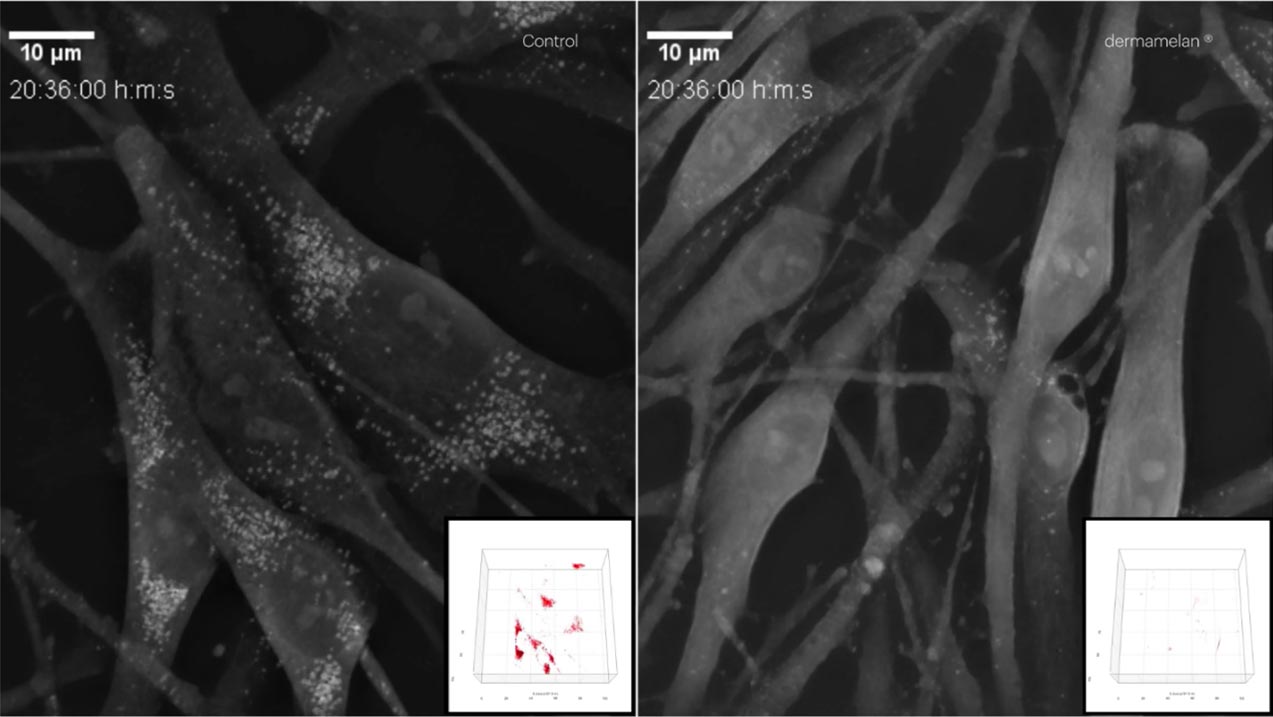We are happy to see that Nanolive imaging has been used to confirm the success of another new therapy, this time treating melasma. In their latest paper “Depigmenting topical therapy based on a synergistic combination of compounds targeting the key pathways involved in melasma pathophysiology”, mesoestetic’s Biotechnology Unit published Nanolive refractive index images of treated and untreated melanocytes1.
Thanks to the high refractive index values of melanin granules, they could be clearly imaged label-free, using the Nanolive platform. Indeed, the images clearly showed that mesoestetic’s treatment decreased the number of melanin granules in melanocytes, which will translate to decreased pigmentation of melasmas in patient skin.
“Nanolive technology has been very useful in order to study the effect of our compounds on melanocytes with high resolution. Live-cell imaging allowed us to see how morphology and melanosomes accumulation changed in real time with the treatment, providing clear evidence of the in vitro efficacy of these compounds.”
Mesoestetic is a pharmaceutical company leading the development and production of therapies in dermatology and aesthetic medicine. You can read their paper in full here.

References:
(1) Alfredo, M.-G.; Maribel, P.-M.; Eloy, P.-R.; Susana, G.-E.; Shotze, L. G.; Carmen, G. M. Depigmenting Topical Therapy Based on a Synergistic Combination of Compounds Targeting the Key Pathways Involved in Melasma Pathophysiology. Experimental Dermatology. https://doi.org/10.1111/exd.14752 .
Read our latest news
Cytotoxic Drug Development Application Note
Discover how Nanolive’s LIVE Cytotoxicity Assay transforms cytotoxic drug development through high-resolution, label-free quantification of cell health and death. Our application note explores how this advanced technology enables real-time monitoring of cell death...
Investigative Toxicology Application Note
Our groundbreaking approach offers a label-free, high-content imaging solution that transforms the way cellular health, death, and phenotypic responses are monitored and quantified. Unlike traditional cytotoxicity assays, Nanolive’s technology bypasses the limitations...
Phenotypic Cell Health and Stress Application Note
Discover the advanced capabilities of Nanolive’s LIVE Cytotoxicity Assay in an application note. This document presents a detailed exploration of how our innovative, label-free technology enables researchers to monitor phenotypic changes and detect cell stress...



